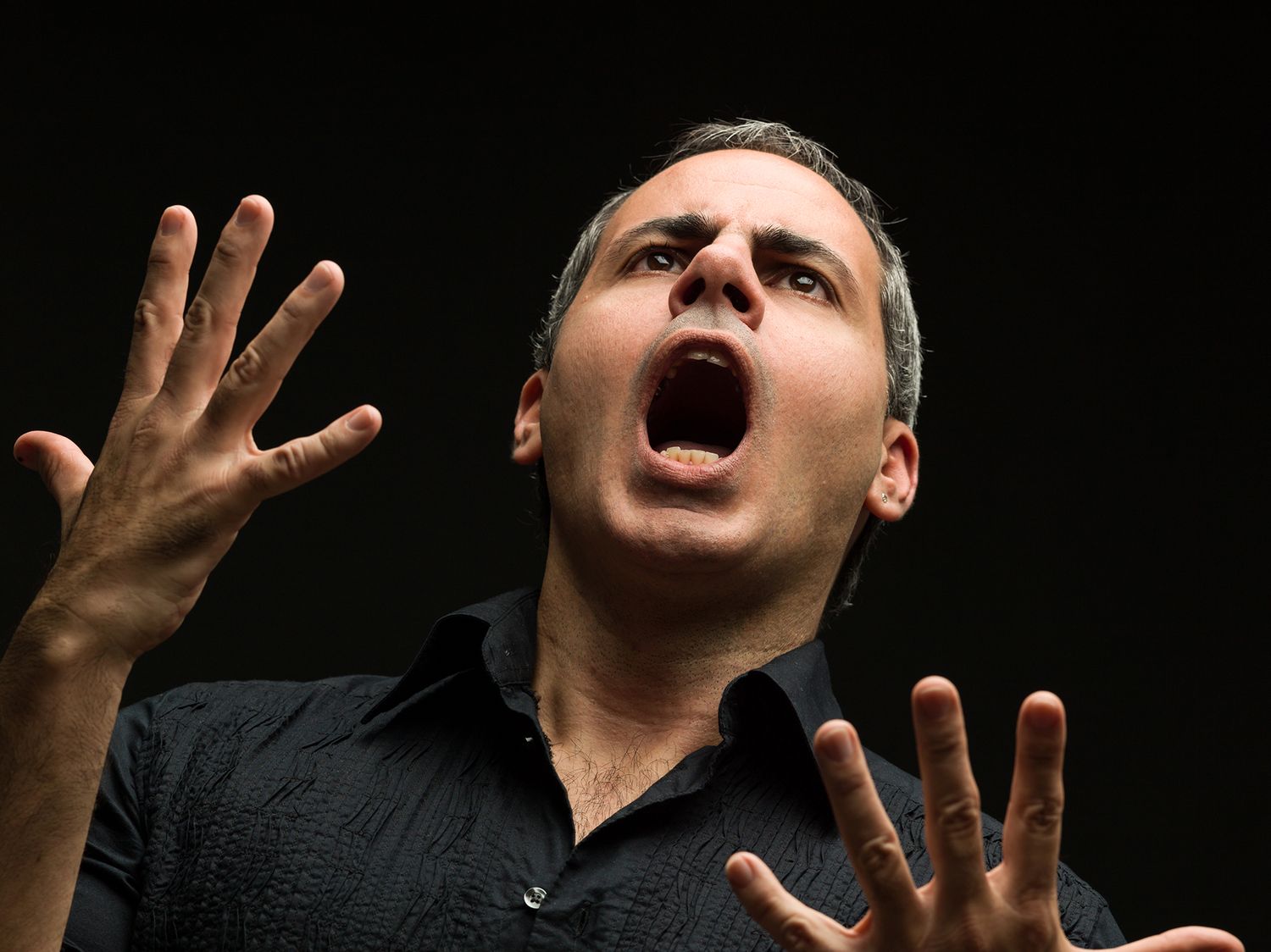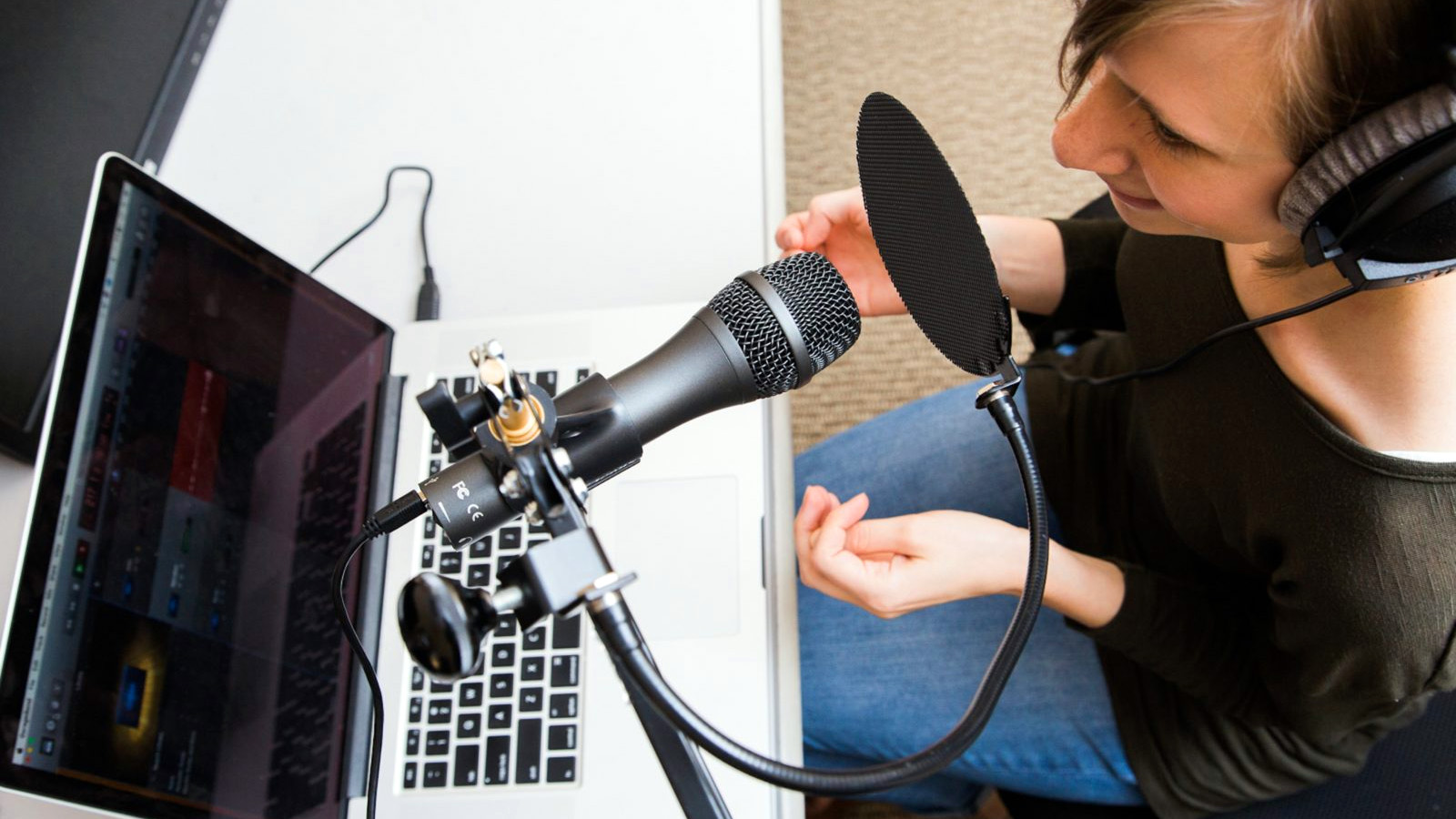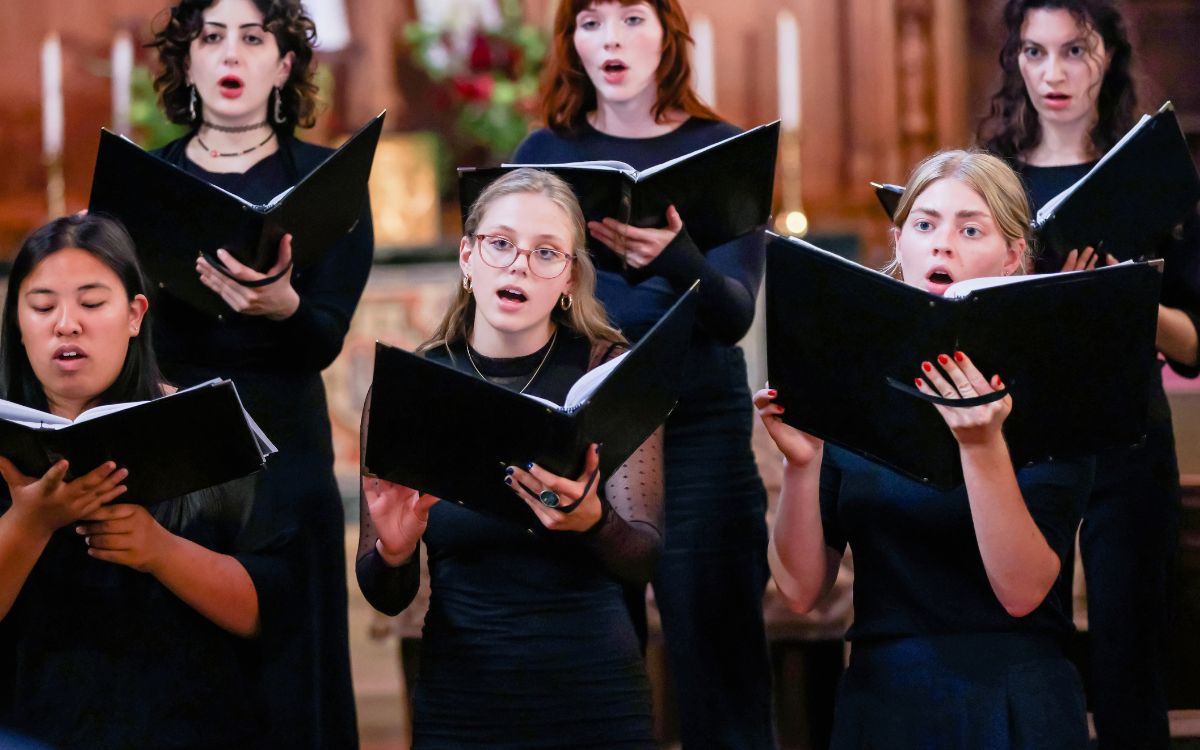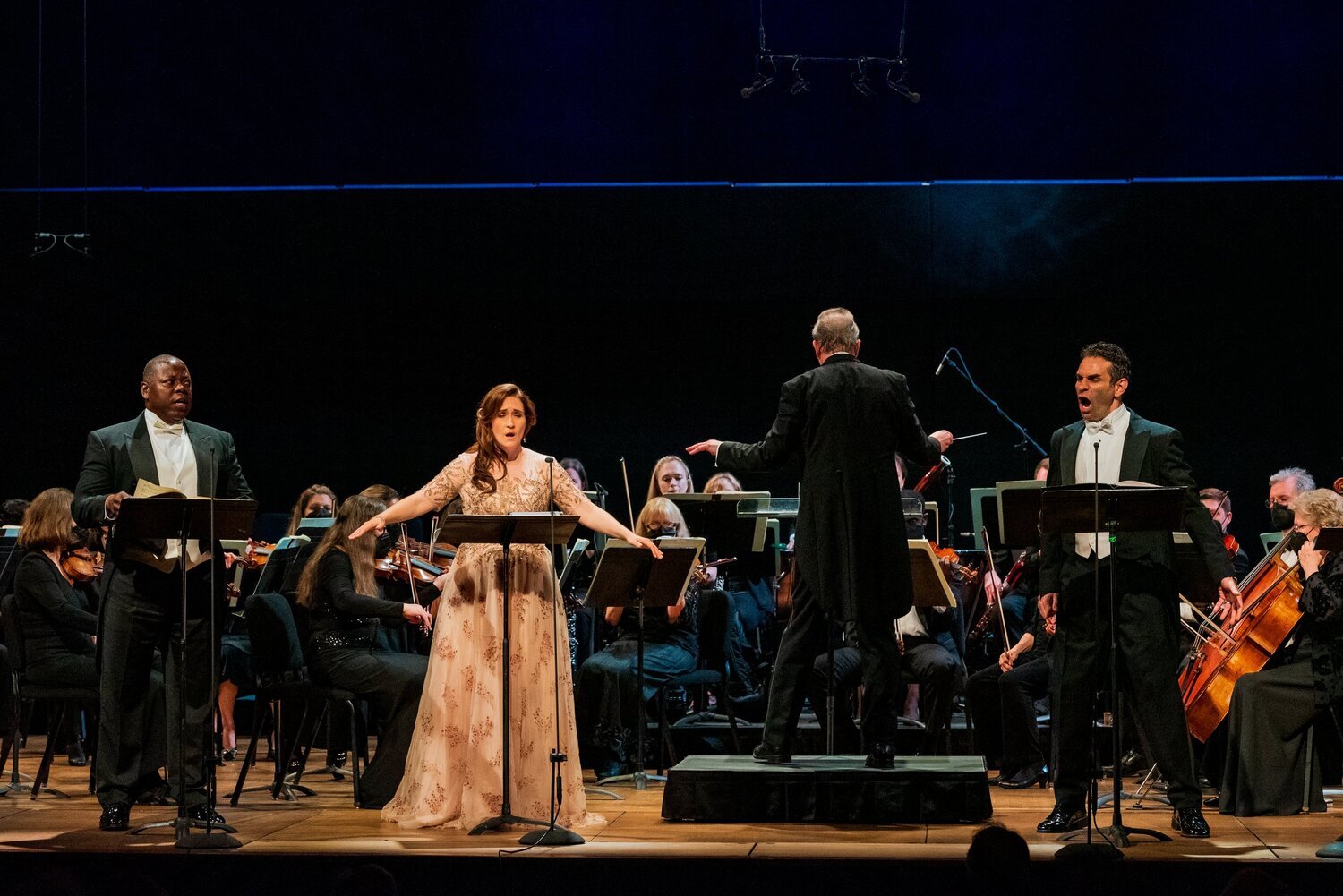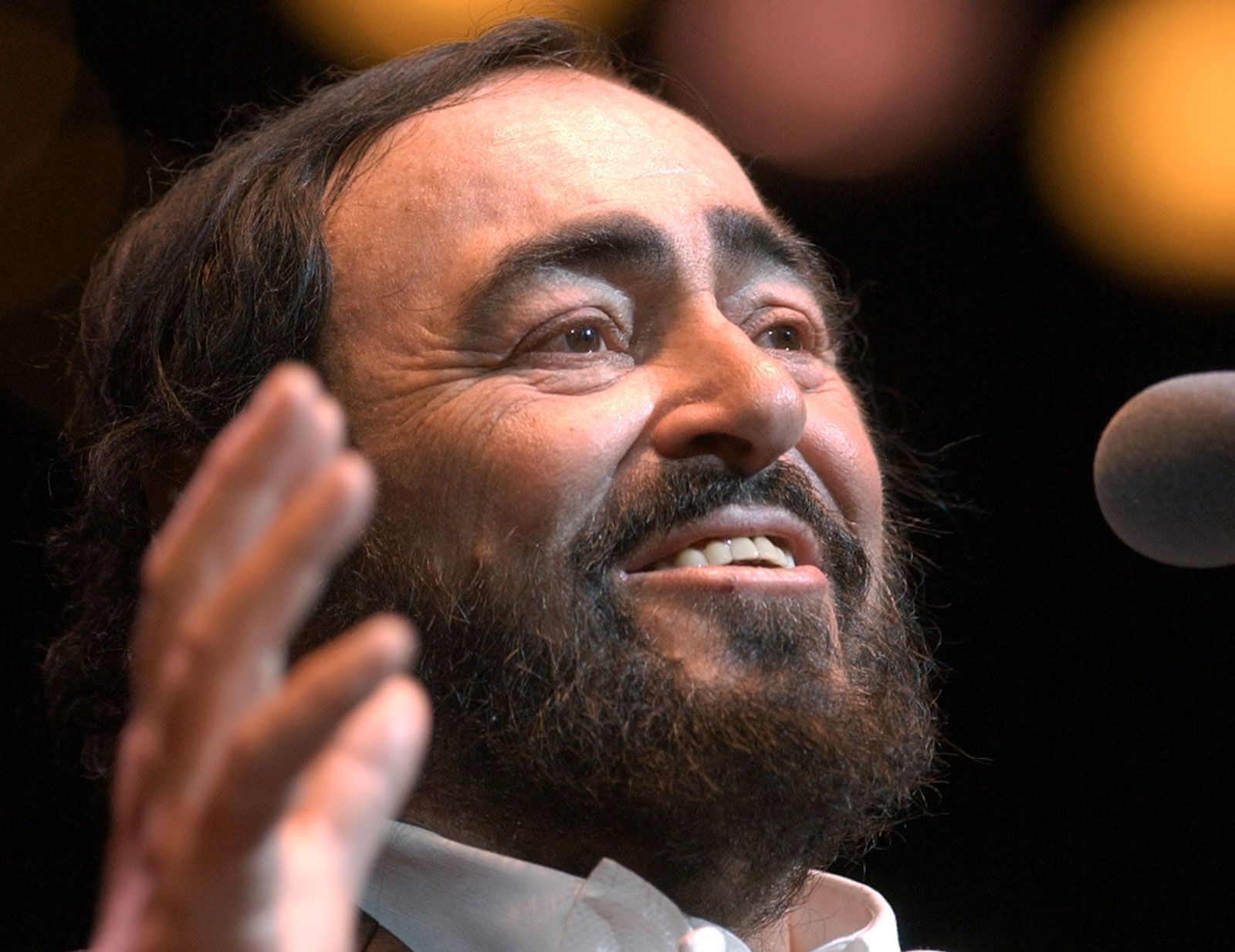Home>Events & Info>Opera>How Do Opera Singers Project Their Voice


Opera
How Do Opera Singers Project Their Voice
Modified: January 22, 2024
Discover the techniques opera singers use to project their voice, ensuring their powerful vocals reach every corner of the theater. Expand your knowledge of opera and its unique vocal demands.
(Many of the links in this article redirect to a specific reviewed product. Your purchase of these products through affiliate links helps to generate commission for AudioLover.com, at no extra cost. Learn more)
Table of Contents
- Introduction
- Understanding the Anatomy of the Voice
- Techniques to Strengthen Vocal Projection
- The Role of Breath Control in Voice Projection
- Vocal Warm-up Exercises for Opera Singers
- Resonance and Placement: Key Elements in Vocal Projection
- Overcoming Performance Anxiety for Stronger Vocal Projection
- The Importance of Proper Posture in Singing
- Developing a Powerful and Resonant Vocal Sound
- Conclusion
Introduction
Opera is an extraordinary art form that combines powerful vocals, compelling storytelling, and enchanting music to create a mesmerizing experience for both performers and audiences alike. At the heart of opera lies the incredible skill of opera singers who possess the ability to project their voice with exceptional clarity and volume, effortlessly filling large theaters without the help of microphones.
The art of vocal projection is essential for opera singers as it allows them to convey the emotions and nuances of the music to every corner of the audience, fostering a deep connection. It requires a combination of technical mastery, physical control, and a deep understanding of vocal anatomy.
In this article, we will delve into the world of opera singing and explore the techniques and strategies employed by opera singers to project their voice effectively. We will discuss the importance of understanding the anatomy of the voice and the role it plays in vocal projection. We will also explore the significance of breath control, warm-up exercises, resonance, placement, proper posture, and overcoming performance anxiety in achieving a powerful and resonant vocal sound.
Whether you are a budding opera singer, a vocal enthusiast, or simply curious about the art of opera singing, this article will provide you with valuable insights into how opera singers hone their craft and captivate audiences with their incredible vocal projection. So, let’s embark on this fascinating journey and discover the secrets of how opera singers project their voices to awe-inspiring heights!
Understanding the Anatomy of the Voice
In order to understand how opera singers are able to project their voices with such power and clarity, it is crucial to have a basic understanding of the anatomy of the voice.
The voice is produced by the interaction of several key components, including the lungs, diaphragm, vocal folds, and resonators. When an opera singer sings, air from the lungs passes through the vocal folds, causing them to vibrate and produce sound. The sound then resonates in the throat, mouth, and nasal cavities, amplifying and shaping the tone.
The vocal folds, which are situated in the larynx, play a central role in voice production. They consist of two small muscles covered by delicate layers of tissue. When the muscles contract and the air passes between the folds, they vibrate, producing sound waves. The tension of the vocal folds, controlled by various muscles, affects the pitch and volume of the voice.
Another crucial element in vocal projection is the resonators, which include the throat, mouth, and nasal cavities. These cavities help to amplify and shape the sound produced by the vocal folds. Manipulating these resonators allows opera singers to create different tones, timbres, and volumes.
Furthermore, the larynx, often referred to as the voice box, is responsible for controlling pitch and vocal tone. It houses the vocal folds and the muscles that control their tension. Proper technique in manipulating the larynx is vital for vocal projection and control.
Having a thorough understanding of the anatomy of the voice enables opera singers to use their instruments effectively. Through years of training and practice, they learn how to manipulate these components to achieve optimal vocal projection and expressiveness.
In the next section, we will explore the techniques and exercises opera singers employ to strengthen their vocal projection and enhance their singing abilities.
Techniques to Strengthen Vocal Projection
Opera singers develop a range of techniques to strengthen their vocal projection, allowing them to fill large theaters without the need for amplification. These techniques focus on enhancing breath control, resonance, and vocal placement. Here are some key techniques employed by opera singers:
1. Breath Control: Strong breath control is essential for vocal projection. Opera singers learn to use their diaphragm effectively, which allows them to take in sufficient air and release it slowly and steadily while singing. This controlled breath supports the vocal sound and provides the foundation for powerful projection.
2. Support from the Abdominal Muscles: Opera singers engage their abdominal muscles to maintain breath support and control. These muscles act as a supportive anchor, providing stability and power as the singer projects their voice.
3. Open Throat Technique: Opera singers focus on maintaining an open throat to allow for the unrestricted flow of air and sound. This technique involves keeping the back of the throat relaxed, the tongue down, and the soft palate lifted. An open throat promotes resonance and amplifies the vocal sound.
4. Vocal Placement: Opera singers learn to direct the sound forward and upward in the resonance chambers of the head, creating a focused and powerful tone. This technique, known as vocal placement, ensures that the sound is projected efficiently and carries well to the audience.
5. Articulation and Diction: Clear articulation and diction are crucial for effective vocal projection. Opera singers work on enunciating each word and vowel sound with precision, ensuring that the audience can understand the lyrics even without amplification.
6. Dynamic Control: Opera singers develop the ability to vary the volume of their voice while maintaining clarity and projection. The use of dynamics adds depth and expressiveness to their performances, captivating the audience’s attention.
7. Vocal Exercises: Opera singers practice a variety of vocal exercises designed to strengthen their vocal cords, increase their range, and improve vocal agility. These exercises target specific areas of the voice, helping to develop greater control and projection.
By employing these techniques and combining them with proper breath control, resonance, and vocal placement, opera singers are able to project their voices with exceptional power and clarity. In the next section, we will explore the role of breath control in achieving strong vocal projection.
The Role of Breath Control in Voice Projection
Breath control plays a vital role in voice projection for opera singers. Having a strong and controlled breath allows singers to deliver powerful and sustained vocal performances. Here’s how breath control contributes to voice projection:
1. Sustaining Vocal Power: Proper breath control enables opera singers to sustain long phrases and powerful notes without running out of breath. By developing the ability to take in a full breath quickly and release it gradually, singers can maintain a constant flow of air to support their vocal projection.
2. Controlling Vocal Dynamics: Breath control allows opera singers to control the dynamics of their voice, ranging from soft pianissimo to strong fortissimo. The controlled release of air contributes to the volume and intensity of the vocal sound, enhancing the projection and impact of the performance.
3. Managing Vocal Registers: Breath control helps opera singers transition smoothly between different vocal registers, such as chest voice and head voice. Proper breath support ensures a seamless flow of sound across these registers, allowing for consistent projection and a balanced vocal tone.
4. Shaping Vocal Phrases: Effective breath control allows opera singers to shape their phrases and deliver expressiveness in their performances. By utilizing appropriate breath pauses and adjusting airflow, singers can emphasize certain words or phrases, adding depth and emotion to their projection.
5. Enhancing Vocal Resonance: The controlled use of breath contributes to vocal resonance, which is the amplification and enrichment of the vocal sound. When singers use breath support to create a balance between airflow and vocal cord vibration, the resonance chambers of the head and chest are engaged, resulting in a fuller and more resonant sound projection.
Opera singers undergo specific vocal exercises and training to develop their breath control. Diaphragmatic breathing, where the breath is drawn deep into the diaphragm, is emphasized to maximize breath capacity and control. Singers also focus on maintaining a steady and controlled flow of air throughout their vocal performance.
Additionally, singers learn to manage breath pressure to suit the needs of different musical passages. For softer passages, they utilize gentle and controlled exhalation, while for powerful moments, they adjust the breath pressure accordingly.
By mastering breath control, opera singers can harness the full potential of their vocal instrument, projecting their voices with exceptional power, clarity, and expressiveness. In the next section, we will explore vocal warm-up exercises that opera singers employ to prepare their voices for optimal projection.
Vocal Warm-up Exercises for Opera Singers
Vocal warm-up exercises are an essential part of an opera singer’s routine as they prepare the voice for optimal projection and performance. These exercises help to relax and engage the vocal muscles, improve breath control, and warm-up the vocal cords. Here are some common warm-up exercises practiced by opera singers:
1. Lip Trills: Lip trills are performed by blowing air through slightly pursed lips, creating a buzzing sound. This exercise helps to gently warm-up the vocal cords, improve breath flow, and promote relaxation in the facial muscles.
2. Humming: Humming exercises involve producing a steady hum on different pitches, focusing on resonance and vocal placement. Humming helps to activate the resonators, warm-up the vocal cords, and develop awareness of proper vocal placement.
3. Tongue Trills: Tongue trills are achieved by rolling the tongue against the roof of the mouth while producing sound. This exercise helps with tongue flexibility, relaxation, and improving breath control.
4. Vocal Sirens: Vocal sirens involve sliding smoothly from the bottom to the top of the vocal range and back down again. This exercise helps to stretch and warm-up the vocal cords, while also promoting breath control and flexibility in pitch.
5. Scale Exercises: Singing scales, both ascending and descending, helps to warm-up the vocal cords, improve breath control, and develop pitch accuracy. It also allows opera singers to explore their full vocal range.
6. Articulation Exercises: These exercises focus on precise articulation and diction. Opera singers practice pronouncing specific consonants and vowels with clarity and precision, preparing the voice for accurate projection.
7. Breath Control and Support Exercises: Various exercises are performed to strengthen the diaphragm and develop greater control over breath support. This includes practicing sustained breath holds, controlled inhalations and exhalations, and dynamic variations in airflow.
8. Vocal Resonance Exercises: Resonance exercises help opera singers develop a rich and resonant vocal tone. This may involve focused vowel sounds, nasality exercises, or directing sound to specific resonance points like the mask, chest, or head.
It is important for opera singers to customize their warm-up routine to address their specific vocal needs and warm-up gradually, starting from lower registers and gradually extending to higher registers. Vocal warm-up exercises should be done gently and without strain to prevent vocal fatigue or injury.
By regularly incorporating these warm-up exercises into their practice routine, opera singers can prepare their voices for optimal projection, flexibility, and control. In the next section, we will explore the concepts of resonance and vocal placement, key elements in achieving strong vocal projection in opera singing.
Resonance and Placement: Key Elements in Vocal Projection
Resonance and vocal placement are fundamental concepts that opera singers utilize to achieve strong vocal projection. These elements involve manipulating the sound produced by the vocal cords to resonate and project effectively. Let’s explore how resonance and vocal placement contribute to vocal projection in opera singing:
1. Resonance: Resonance refers to the amplification and enrichment of the vocal sound produced by the vocal cords. By utilizing various resonance chambers, including the throat, mouth, and nasal cavities, opera singers can create a fuller and more resonant sound. Different vowel sounds and vocal techniques are employed to engage specific resonance areas and optimize projection.
2. Vocal Placement: Vocal placement involves directing the sound to specific resonance points in the head, mask, chest, or even back of the throat. By focusing on proper placement, opera singers achieve a clear and focused tone that can easily cut through the acoustics of a large theater. Strategic use of vocal placement allows for improved projection, clarity, and resonance.
3. Forward Focus: Opera singers strive for a forward focus of sound, directing it towards the audience rather than letting it get trapped in the throat or nasal cavity. This forward projection creates a more powerful and captivating sound, ensuring that the voice reaches every corner of the venue.
4. Balanced Resonance: Achieving balanced resonance involves finding the ideal mix of resonance in various areas of the vocal tract. Opera singers aim to balance the resonance between the chest and head voice registers, allowing for seamless transitions and consistent projection throughout their vocal range.
5. Articulation and Clarity: Proper articulation and clarity of speech are essential for effective vocal projection. Opera singers focus on enunciating each word and vowel sound with precision, ensuring that the audience can understand the lyrics even without amplification. Clear articulation also enhances the projection and overall quality of the vocal sound.
Opera singers develop a keen sense of their individual resonance and vocal placement through extensive training and practice. They experiment with different vocal techniques, vowel modifications, and tongue positions to discover the most effective ways to achieve optimal projection in line with their unique vocal abilities.
By mastering resonance and vocal placement, opera singers can project their voices with exceptional power, clarity, and resonance, captivating audiences with their expressive performances. In the next section, we will discuss techniques for overcoming performance anxiety, which can impact vocal projection.
Overcoming Performance Anxiety for Stronger Vocal Projection
Performance anxiety can significantly impact an opera singer’s vocal projection and overall performance. The fear of judgment or making mistakes can cause tension and hinder the ability to project the voice effectively. Overcoming performance anxiety is crucial for opera singers to deliver their best vocal performances. Here are some techniques to overcome performance anxiety:
1. Deep Breathing: Deep breathing exercises help calm the nerves and reduce anxiety. By taking slow and deep breaths, opera singers can relax the body and release tension, allowing for better vocal control and projection.
2. Visualization: Visualization techniques involve mentally rehearsing successful performances in vivid detail and positive outcomes. By visualizing themselves confidently and successfully projecting their voice, opera singers can build their self-confidence and reduce performance anxiety.
3. Positive Self-Talk: Encouraging and positive self-talk can help alleviate performance anxiety. Opera singers should replace negative thoughts and doubts with affirmations and reminders of their past successes and abilities. Building a strong inner dialogue can boost confidence and reduce anxiety.
4. Physical Warm-up: Engaging in physical warm-up exercises, such as stretching, light exercises, or vocal warm-ups, can help release tension in the body and prepare the vocals for optimal projection. A relaxed and warmed-up body can aid in overcoming performance anxiety.
5. Rehearsal and Preparation: Thorough rehearsal and preparation instill a sense of confidence in opera singers. Knowing that they have put in the time and effort to prepare their repertoire and master their vocal techniques can help reduce anxiety and improve vocal projection during performances.
6. Performance Experience: Gaining experience through regular performances can gradually reduce performance anxiety over time. By exposing themselves to different performance settings, opera singers become more comfortable and familiar with the challenges and pressures of singing in front of an audience.
7. Support System: Having a strong support system, including vocal coaches, mentors, or fellow singers, can provide invaluable emotional support during times of anxiety. The understanding and encouragement from others can help alleviate anxiety and boost confidence in vocal projection.
8. Mindfulness and Relaxation Techniques: Practicing mindfulness and relaxation techniques, such as meditation, progressive muscle relaxation, or guided imagery, can help opera singers manage anxiety before and during performances. These techniques promote a calm and focused state of mind, allowing for better vocal projection.
It’s important to note that overcoming performance anxiety is a process that may require time and practice. Each opera singer may find different techniques more effective for them. By addressing performance anxiety, opera singers can unlock their full vocal potential and achieve strong and confident vocal projection on stage.
The Importance of Proper Posture in Singing
Proper posture is of utmost importance for opera singers as it plays a significant role in vocal projection and overall vocal performance. Maintaining good posture allows singers to utilize their full lung capacity, support breath control, and optimize resonance. Here’s why proper posture is essential for singing:
1. Optimal Breath Control: Good posture creates the ideal alignment of the body, allowing the diaphragm to function efficiently. When the spine is elongated, the chest is lifted, and the shoulders are relaxed and back, singers can take in deeper breaths and have better control over their breath support. This facilitates optimal breath control, which is crucial for steady and controlled vocal projection.
2. Expanded Lung Capacity: Proper posture allows the lungs to fully expand, providing a larger space for air intake. This increased lung capacity allows opera singers to take deeper breaths, ensuring a steady supply of air for sustained vocal projection. Additionally, it enables singers to create a fuller and more resonant sound.
3. Improved Vocal Resonance: Good posture helps in aligning the vocal tract, facilitating proper resonance. When the body is aligned, the sound produced by the vocal cords can travel freely through the throat, mouth, and nasal cavities, enhancing resonance and projection. This allows opera singers to achieve a rich and vibrant sound that carries well to the audience.
4. Vocal Cord Alignment: Proper posture supports the alignment of the vocal cords, enabling optimal vocal cord closure and function. When the body is in a balanced and aligned position, the vocal cords can vibrate freely without strain or tension, resulting in a more controlled and projected vocal sound.
5. Stability and Control: Good posture provides stability and control over the body, allowing opera singers to maintain balance and coordination during vocal performances. With a stable foundation, singers can focus on their vocal technique, projection, and expression without being hindered by physical instability or discomfort.
To maintain proper posture while singing, opera singers should:
– Stand tall with the head aligned over the shoulders and the chin parallel to the ground.
– Keep the shoulders relaxed and down, avoiding tension or hunching.
– Lengthen the spine by engaging the core muscles and maintaining a natural curve in the lower back.
– Avoid bracing or locking the knees, allowing for flexibility and ease of movement.
– Distribute weight evenly between both feet, promoting stability and balance.
Consistently practicing and maintaining good posture not only improves vocal projection but also prevents strain or injury to the vocal cords and surrounding muscles. It allows opera singers to perform at their best and convey their emotions and musicality effectively.
In the next section, we will explore techniques for developing a powerful and resonant vocal sound in opera singing.
Developing a Powerful and Resonant Vocal Sound
In opera singing, developing a powerful and resonant vocal sound is a goal for every performer. It involves honing vocal techniques and utilizing proper vocal placement to maximize the volume, clarity, and resonance of the voice. Here are some tips and techniques to develop a powerful and resonant vocal sound:
1. Focus on Breath Support: Strong breath support is the foundation for a powerful voice. Properly engaging the diaphragm and using controlled breaths allows opera singers to create a steady stream of air to support their vocal projection. Focus on maximizing breath capacity and maintaining an even flow of breath throughout phrases.
2. Engage Vocal Resonance: Resonance is key to creating a full and vibrant vocal sound. Experiment with resonators, such as the throat, mouth, and nasal cavities, to find the optimal placement for maximizing resonance. Vocal exercises and training can also help in developing and strengthening resonance.
3. Develop Vocal Strength and Flexibility: Regular vocal exercises, such as scales, arpeggios, and vocal range drills, help to build vocal strength and flexibility. Working on vocal technique allows singers to access the full range of their voice and produce powerful and controlled sounds across different registers.
4. Pay Attention to Vocal Placement: Vocal placement focuses on directing the sound to specific resonance points in the head, mask, or chest. Experiment with different placements to find the most resonant and projected sound suitable for your voice. Proper vocal placement ensures a clear and focused tone and enhances projection.
5. Embrace Expressive Singing: A powerful vocal sound goes beyond volume. It involves conveying emotions and expressing the meaning of the music. Allow yourself to fully engage with the text and music, connecting with the emotions and communicating them through your voice. This will add depth and intensity to your vocal projection.
6. Seek Professional Guidance: Working with a vocal coach or instructor who specializes in opera singing can help fine-tune your technique and provide personalized guidance. They can help identify areas for improvement, offer exercises tailored to your voice, and guide you in achieving a powerful and resonant vocal sound.
7. Practice Regularly: Consistency is key when developing your vocal abilities. Regular and disciplined practice allows you to strengthen your vocal muscles, improve control, and maintain optimal vocal health. Aim for a structured practice routine that includes warm-ups, exercises, and repertoire development.
Remember to listen to your body and vocalize within your comfortable vocal range. Avoid pushing or straining your voice, as this can lead to vocal fatigue or injury. Take breaks when needed and prioritize vocal health and self-care.
By integrating these techniques into your vocal practice, you will gradually develop a powerful and resonant vocal sound that can captivate and move audiences in the world of opera. In the concluding section, we will summarize the key points discussed in this article on vocal projection in opera singing.
Conclusion
In the world of opera, vocal projection is a crucial skill that allows singers to captivate audiences with their powerful and resonant voices. Throughout this article, we have explored the various elements and techniques that contribute to strong vocal projection in opera singing.
Understanding the anatomy of the voice, including the vocal folds, resonators, and larynx, provides a foundation for singers to manipulate their instrument effectively. Techniques such as breath control, vocal placement, and resonance help opera singers achieve optimal projection and clarity in their vocal performances.
Additionally, vocal warm-up exercises prepare the voice for optimal projection by relaxing the vocal muscles, improving breath control, and warming up the vocal cords. Overcoming performance anxiety is also vital for opera singers to project their voices confidently and connect with the audience.
Proper posture, with an elongated spine and relaxed muscles, allows opera singers to utilize their full lung capacity, enhance breath control, and optimize vocal resonance. By developing a powerful and resonant vocal sound, opera singers can convey emotions, captivate audiences, and bring characters to life on stage.
Regular practice, guidance from vocal coaches, and a consistent focus on vocal technique are key to developing and maintaining strong vocal projection. Remember to approach your vocal practice with patience, care, and proper vocal health techniques to prevent strain or injury.
In conclusion, vocal projection is a combination of technical mastery, breath control, resonance, and emotional expression. By understanding the intricacies of the voice and employing these techniques, opera singers can project their voices confidently and passionately on the operatic stage.
So, whether you are an aspiring opera singer or simply appreciate the beauty of opera, understanding the art of vocal projection in this magnificent genre allows us to appreciate the skill, dedication, and artistry that opera singers bring to their performances.




